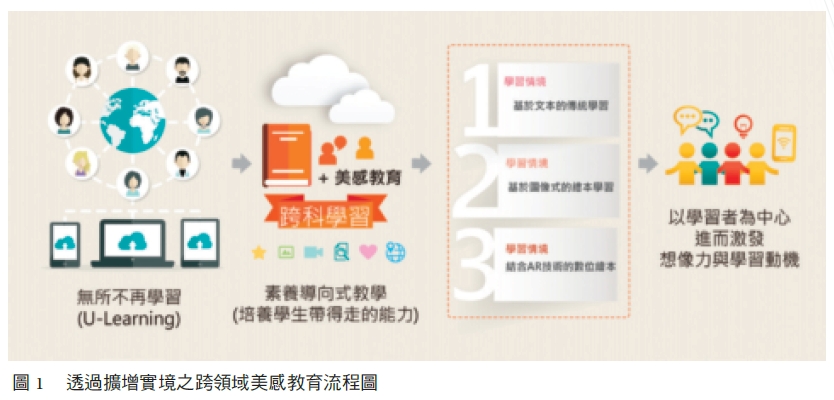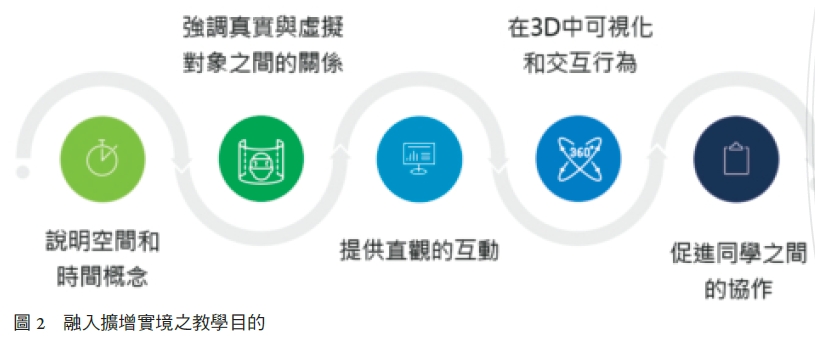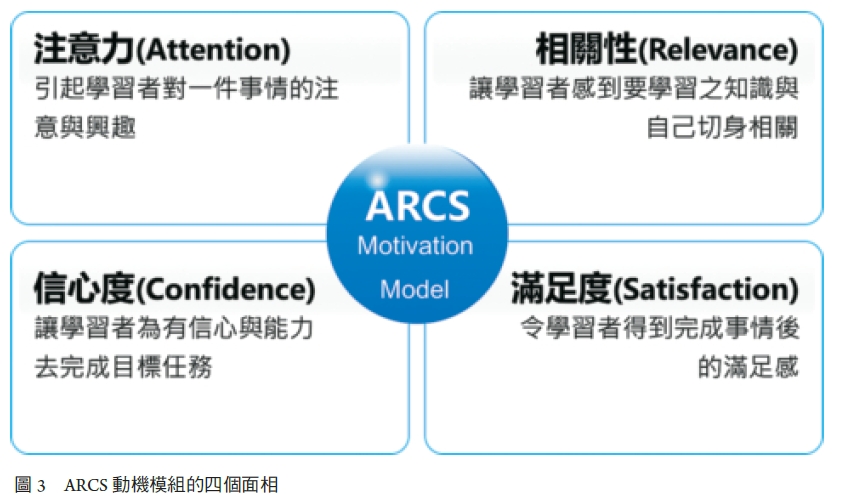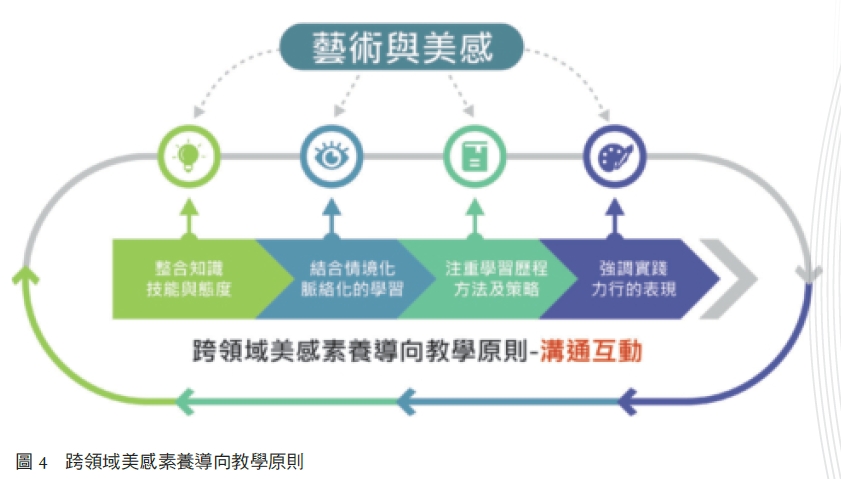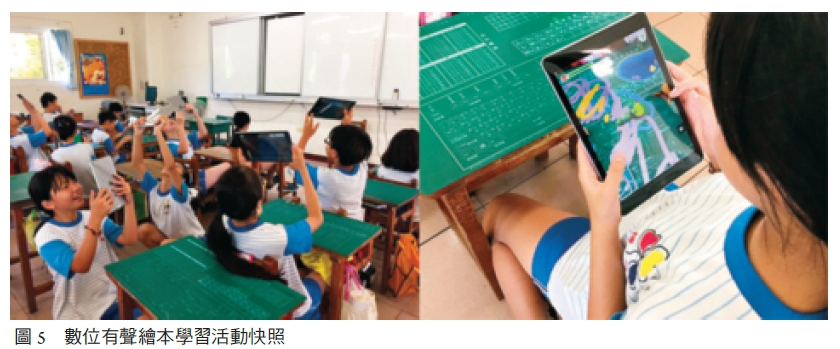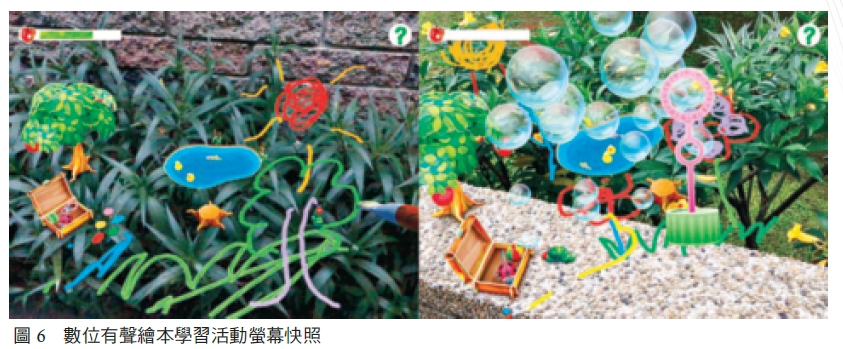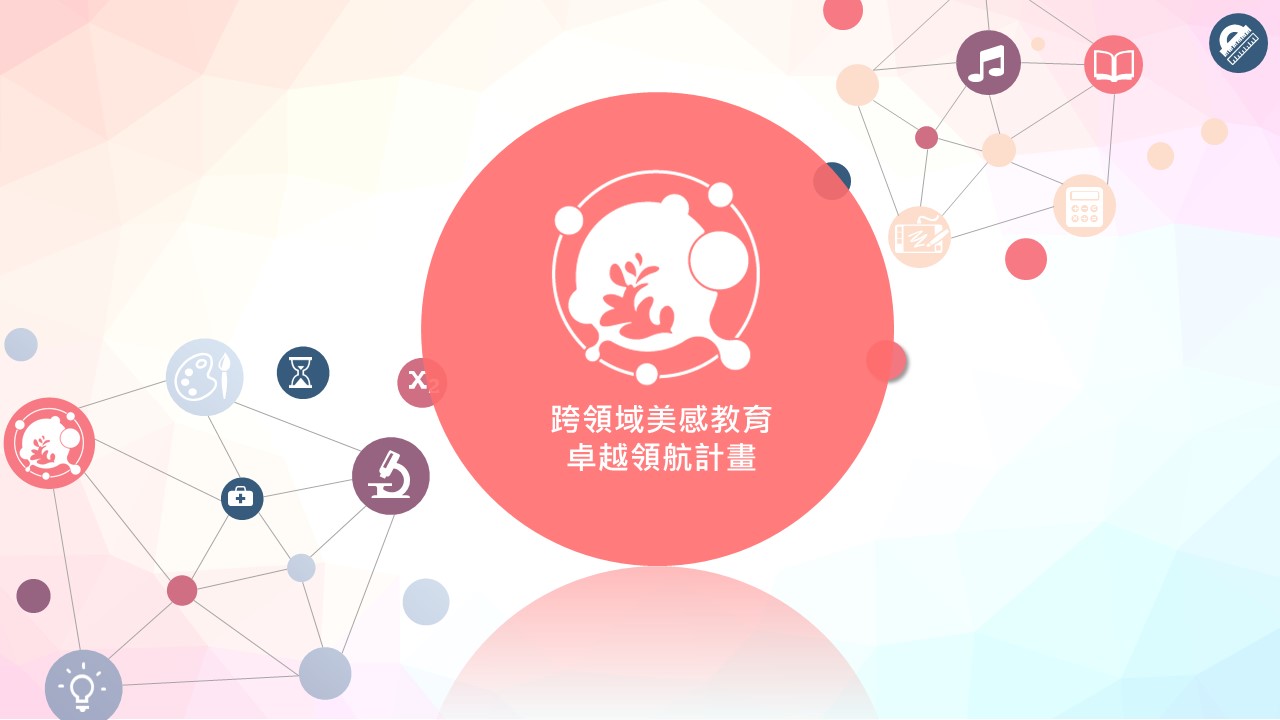Stimulate imagination and learning motivation through augmented reality (AR) courses
Professor Guo Mei, Department of Music, National Taitung University
Assistant Professor Chen Shiye, Department of Information Engineering, National Taitung University
1. Preface
Teachers are the key to inspiring students' wisdom and cultivating a sound personality. Through the establishment of a cross-field teacher community, teachers can discuss and stimulate each other, thereby making teaching more lively and interesting. Judging from the current status of education reform, cross-field integrated teaching is an important trend in modern education.
In the cross-field aesthetic education experimental course, the Ministry of Education defines the “application strategies” part as “strategies developed and used when integrating artistic concepts and aesthetic elements into the teaching of other subjects” (Ministry of Education, 2014b). For art, art teaching activities have the characteristics of open learning and can accommodate diverse teaching goals in different fields in all subject attributes; therefore. The cross-disciplinary curriculum design with the art field as the core can not only highlight the individuality and differences of each discipline, but also make the school learning experience more common and diverse.
When Gao Zhenfeng (2013) proposed the theory and model of integrating digital collections into art teaching, he pointed out the timing and teaching strategies for integrating digital collections into art teaching. In the "Use Timing" part of the cross-field aesthetics course, since artistic concepts and aesthetic elements are teaching materials used in teaching activities, teachers can apply and expand artistic concepts and aesthetic elements according to teaching needs when teaching. Reality (AR) technology guides students in actual experience and learning, which is of great significance to the overall teaching activities of cross-field aesthetic courses.
Therefore, this purpose proposes a digital audio picture book based on augmented reality (AR) technology and learning theory to build a learner-centered learning environment, allowing teachers to establish a common learning culture of "learning community" between teachers and students across subjects. , as well as research on teaching strategies between fields; and explore how to stimulate students' imagination and learning motivation through the use of augmented reality (AR), which not only inspires teachers' diverse perceptions, but also brings students into the teaching concept of shared learning , implement the goals of the learning community, and then cultivate students’ abilities that they can take away (Figure 1).
2. Discussion on integrating digital audio picture books into cross-field aesthetic education courses
With the advancement of technology, portable devices have become a part of daily life, and augmented reality (AR) digital learning courses are a recent trending technology. The key factors that characterize digital learning include, in addition to professional educational content: how to make course content more diverse and attractive through learning with interactive technologies such as multimedia, and transform traditional printed books into audiobooks with diverse teaching functions. Learning is an important way to stimulate students' potential and creativity.
In today's living environment where technology is so advanced and developed, augmented reality (AR) can be used in a wide range of applications. Because AR devices have high interactivity with the environment and high immersion that can arouse user interest, they are particularly suitable for use in It is used for cross-field digital learning and can improve learners' learning motivation, attention, imagination, creativity, logical thinking and other abilities.
Generally speaking, because children are easily attracted by animated games or sounds in e-books, in the course design of cross-field aesthetic education, if teachers can integrate augmented reality (AR) technology guidance and learning, provide physical and Seamless perception between virtual worlds makes teaching activities attractive and interactive learning, which should be able to fill the shortcomings of traditional teaching.
Digital audio picture books are a combination of pictures and simple story text. They are mainly based on dynamic images and supplement the text through audio information technology. Teachers use images and audio-visual materials as questions to guide and discuss ideas. Compared with traditional pure text reading, digital audio picture books combined with augmented reality (AR) technology are more attractive to children and are a very effective interactive learning activity (Lever, Sénéchal, 2011). With the application and learning of digital technology, many teachers' teaching materials have changed from traditional printed books to electronic audiobooks with diversified teaching (Huang and Liang, 2015). So far, Henry and Simpson (2001) have discussed the impact of digital audio picture books on students' learning behavior and experience changes, arguing that digital audio picture books are successful and effective for children's learning. Only a few studies still point out that digital technology may Negative effects on children, such as excessive multimedia elements, can distract learners (Parish Morris, 2013). However, in terms of the current technology and application of augmented reality (AR), considerable progress has been made in operation. The application of augmented reality (AR) can not only provide seamless perception between the physical and virtual worlds , it can also control students' perspectives and allow students to experience teaching in real situations through real-time interaction with the environment (Cheng, Tsai, 2013). When teaching, teachers use the resources of artistic concepts and aesthetic elements to create real situations based on the needs of teaching. As the main axis of learning and the focus of discussion, it is very suitable for teachers to use in cross-field teaching curriculum design and student learning activities.
Currently, course design and research on augmented reality (AR) in cross-disciplinary teaching courses or in omnipresent learning environments are just beginning (Chen, Lin, 2016). In view of this, the application of augmented reality (AR) in the teaching design and learning of digital audio picture books in cross-disciplinary aesthetic education courses is a topic worthy of further promotion and exploration.
1. Application of audio digital picture books in cross-field aesthetic education courses
The diversity of art education activities also makes the curriculum construction methods in the art field extremely diverse. In addition to being an independent learning field, it can also be integrated with other subject areas at different levels (Burton, Abeles, Horowitz, 2000). For picture books, picture books are a combination of pictures and simple story text, where the pictures are mainly for presentation and the text serves as a demonstration aid. Compared with text books, the diverse interactive learning of audio digital picture books can more effectively arouse students' learning motivation.
In recent years, Rabidoux and MacDonald (2000) have obtained considerable research on the teaching effectiveness of audio digital picture books, proving that teachers design digital learning strategies into learning activities to guide students in reading audio digital picture books, which not only improves literacy and reading skills, but also enhances Improve imagination ability. As an augmented reality application technology, the development of picture books can be divided into four types: (1) scanning physical books into digital electronic files, (2) filming picture book content into movie stories, (3) applying digital technology to picture books , (4) Add game-like interactive functions such as music and animation (Yokota, Teale, 2014).
Cochran and Bull (1991) mentioned in their previous paper research that audio digital picture books can provide a variety of sensory stimulation methods, which can improve students' learning motivation, maintain students' attention, improve students' academic performance, and provide personalized teaching and Substantive feedback. Verhallen and Bus (2010) also found that whether the learning method is a digital storybook or a non-verbal computer game, it is beneficial for students to learn receptive and expressive vocabulary. In addition, scholars such as Yilmaz, Kucuk and Goktas (2017) believe that augmented reality AR audio digital picture books are attractive and enjoyable for children, and can become an effective educational tool for preschool children's cognitive and listening abilities. With the popularity and development of mobile devices, Chinese scholar Jing Zhao (2018) used 3D technology to design an interactive audio digital picture book for Chinese short stories. The research results prove that the audio digital picture book not only makes the learning process more lively and interesting, but also It also promotes interaction between parents and children. Therefore, in the teaching design of cross-field aesthetic courses, if augmented reality can be applied to mobile devices and information technology can be integrated into digital picture books, digital images can satisfy both vision and hearing at the same time, and students' learning behavior And the process can also be interactive, allowing students to search, plan and execute independently, thereby improving learning and teaching effectiveness (Figure 2).
2. Cultivating imaginative thinking mode
Heath (2008) considers imagination a highly valuable cognitive ability, suitable as an agent of active activity, allowing people to think beyond actual experience. White (1990) believes that imaginative ability is an important factor in stimulating potential and stimulating creativity; therefore, in cross-field aesthetic education, imaginative ability can be regarded as the basis for cultivating aesthetic creative thinking and innovation drive.
Imaginative thinking patterns are an important factor in learning and are suitable as facilitators of active activities, allowing people to think beyond actual experience (Heath, 2008). Imaginative thinking mode is an important factor in learning. In 2018, Phillips, Carr, and Thomas proposed a study using museums as an example to strengthen various learning environments. They pointed out that schoolchildren learn in common by watching adults and peers learn collaboratively. The knowledge constructed can enhance their artistic beauty and imaginative thinking ability. In the teaching process, imaginative thinking mode can be said to be an important factor in stimulating potential and creativity. The research results of Wyse D. and Ferrari A. in 2015 pointed out that changing students' learning methods can improve their creativity and imagination. Although these two types of thinking modes were mentioned in the research, most studies focused on creativity thinking mode, and few people focus on cultivating the thinking mode of imagination.
JP Guilford pointed out in 1950 that regarding the relationship between imaginative thinking and diffuse thinking, although the traditional view of psychological operations focuses more on elements such as accuracy, efficiency, logic, etc. that are biased towards "convergent thinking", the ability of the mind cannot be ignored. There is "diffused thinking" that changes perspectives, generates alternative answers, and seeks other possibilities for things (Craft, 2002). Zhang Shihui (2003) believes that imaginative thinking covers a very wide range. Although imaginative thinking is closely related to diffuse thinking, it is not limited to the scope of diffuse thinking ability. When talking about solutions to creative problems, we should not only pay attention to using diffuse thinking to provide the breadth of thinking, but also pay attention to providing the basic boundaries of imaginative activities, and use restrictive convergent thinking to enrich the depth of thinking (Lu Jinxie, 2003) . That is to say, in view of the previous training that paid too much attention to convergent thinking, although imaginative thinking focuses more on the importance of cultivating diffuse thinking ability, in terms of the comprehensiveness of thinking, imaginative thinking ultimately still emphasizes convergent thinking, diffuse thinking, and involving post-supposition recognition. The evaluation of knowledge and evaluation considers the appropriate balance between the three.
It can be seen that the imaginative thinking mode is a kind of creativity and power of thought (Perdue, 2003), which can enable people to transcend past experiences and create meaningful and complete possibilities by organizing fragmented situations. The imaginative thinking mode is regarded as the basis for cultivating creative thinking and the driving force for innovation (Chiu, 2015). Therefore, the design of teaching activities in cross-field aesthetic courses, allowing students to learn through digital audio picture books in an interactive ubiquitous learning environment (U-learning), is an important topic to stimulate students' imagination and thinking ability.
3. Improving learning motivation through ARCS model ARCS
ARCS is a set of motivation models proposed by John Keller in 1984 that integrates many psychology-related motivation theories and instructional design models. The purpose of ARCS motivation theory is to help design course materials or improve teaching. He believes that if the teaching materials developed by any kind of teaching design cannot effectively arouse learners' interest or concentration, the learning effect will be half the result. Therefore, Keller hopes that the ARCS motivation model can be applied to students of all ages, allowing teachers to design teaching materials or teaching strategies that can more effectively improve learners' learning and performance after understanding their motivational needs. (Keller, 1984)
Stimulating students' learning motivation is the main task of teaching activities, and it is also the most important factor in improving students' learning effectiveness in the learning process (Chang, Chang, Shih, 2016). In fact, using digital interactive learning through augmented reality (AR) can improve learning motivation (Annetta, 2009). The ARCS model is the most commonly used motivation model in teaching, including: attention (Attention), relevance (Relevance), confidence (Confidence) and satisfaction (Satisfaction); that is to say (1) capture and maintain students' motivation attention, (2) explain why students are learning what they are learning, (3) make students believe they can succeed if they put in the effort, (4) help students feel rewarded and confident. The ARCS model provides teachers with a guidance strategy and designs teaching activities to motivate and encourage students: to improve students' learning motivation (Figure 3).
Toussaint and Brown (2018) used game-based learning to combine it with the ARCS model to improve students' motivation and engagement in course learning. With the advancement of electronic digital learning in recent years, combining the digital interactive learning method of augmented reality AR with the ARCS model can be used to evaluate the effectiveness of students' digital picture book learning using augmented reality AR technology. As shown in the figure below (A) Attention: It is used to arouse students' attention and motivation and maintain students' concentration. It uses a highly immersive sensory experience of augmented reality to allow students to enjoy the digital audio picture book from the beginning. Attracted by the superposition of virtual and real environments. It is also equipped with background sounds, interactive games, painting functions and feedback sound effects to maintain students' concentration in the virtual environment. (R) Relevance: The teaching goal is to understand digital audiobooks, provide students with cross-field relevant knowledge, visualize caterpillars in real life, build a virtual ecological environment, and use simple and easy-to-understand operations to let students Students can click on each image to display various corresponding musical scales, and can use their creativity to draw different virtual worlds. (C) Confidence: It means that through repeated operations, students can improve their understanding of knowledge and deepen their familiarity with the content. Through simple operations, users can quickly understand the life of a caterpillar's metamorphosis, improving students' understanding of the content. and familiarity with the instructional objectives. (S) Satisfaction: It means that audio digital picture books satisfy students’ sense of achievement in learning, encourage learners, and allow learners to improve their knowledge.
Therefore, through audio digital picture books combined with AR technology, in addition to learning relevant knowledge of natural sciences, it also includes science from different dimensions such as music, visual arts, mathematics, etc., thereby enhancing learners' sense of satisfaction and willingness to learn, thereby enhancing learning motivation. . With the advancement of electronic digital learning in recent years, combining the digital interactive learning method of augmented reality AR with the ARCS model can be used to evaluate the effectiveness of students' digital picture book learning using augmented reality AR technology.
Participate in the types and cases of cross-field aesthetic education courses
In recent years, important organizations such as the United Nations UNESCO have been advocating lifelong learning and literacy-centered education reform, and Taiwan's education reform is also moving in this direction. With the launch of the Twelve Years of National Education, Taiwan's education reform has reached a new milestone, and the "Twelve Years of National Basic Education Curriculum General Outline" (National Education Research Institute, 2014) further focuses on "core competencies". ) as a concept, hoping to achieve cross-field integrated curriculum design; that is, teachers’ curriculum development and teaching design will move towards the goal of innovation in step with the new era.
Aesthetic literacy education emphasizes that learning must be close to the real life environment, rather than loose knowledge and specific abilities. Learning science is to solve problems in life, and problems in life are not divided into subjects. The future education policy will pay more attention to core concepts and interdisciplinary learning. The "General Outline" of the Twelve Years of State Education classifies the "artistic cultivation and aesthetic literacy" project into the aspect of "communication and interaction", which means that through "art and aesthetics" it can not only help teachers in all fields "communicate" with students, but also To activate the curriculum, we can also use art to emphasize the "interaction" feature to enhance the dialogue between teachers and students and achieve learning results (Figure 4).
As mentioned above, although the cross-field teaching strategy of the "General Outline" is under this vision, if cross-field aesthetic education can be introduced, learning will become more diverse and interesting.
As the education stage improves, the cultivation of art learning not only includes the knowledge, skills and affection of the art subject itself, but also clearly covers the diverse and cross-domain learning connotations that can interact with different disciplines, society and culture (National Education Research Academy, 2015). This course combines subject dimensions from a variety of different fields to explore the life cycle of insects. The audio digital picture book "A Very Hungry Caterpillar" developed by StoryToysTM and integrated with augmented reality technology is used as a supplementary material for students' courses. This digital audio picture book allows students to freely explore and play in the audio world while connecting to the real world, covering natural and information science, music, art and mathematics education. In this teaching activity, the field of natural and information science is the life cycle of caterpillars, and mobile devices and augmented reality technology are used to understand its life cycle and how to break out of the cocoon through interaction with the virtual caterpillar and the real environment. , and then in the process of emerging into a butterfly, the dimension of music allows students to sort various sounds and establish an interactive learning environment, making learning more lively and interesting, and allowing the virtual caterpillar to generate corresponding feedback based on the sounds produced. , the dimension of visual art allows students to draw and create learning environments at will, allowing learners to freely express their creativity while making extended connections with the real world. The dimension of mathematics is the calculation of dates and food. In addition, there are When the caterpillar emerges as a butterfly, the beautiful geometric shapes on its wings are all manifestations of the beauty of mathematics (Figure 5).
Based on augmented reality AR technology, which is different from traditional textbooks and picture books, in teaching activities, through the use of augmented reality AR technology, students can interact with caterpillars in a real learning environment and see how the caterpillars change. The process of turning into a beautiful butterfly and captures and holds students' attention (Figure 6).
It can be seen that the audio digital picture book presents the story content according to the students' actual environment, changing from traditional passive indoctrination to active learning through the digital audio picture book, allowing students to experience abstract academic theories from actual feelings, and improving students' understanding of insect growth and metamorphosis. Knowledge and understanding of the process; help students understand the life cycle of insects, and then acquire the "visual vocabulary" of art, the "auditory elements" of music, and knowledge in various related fields, enhance the depth, breadth and completeness of learning, and ultimately experience with students , life and society, this interactive learning method provides multiple interactive learning for cross-field aesthetic course teaching.
4. Conclusion
The 12-year national education train has been launched. In the promotion and practice of the new curriculum, how to stimulate students' independent learning is the primary core goal of the 12-year national basic education of "spontaneity, interaction, and mutual benefit". In order to achieve this goal, in addition to In addition to mastering the timing of teaching, it is also necessary to propose effective teaching strategies to stimulate discussion and "interaction" between teachers and students, and to avoid "integration for the sake of integration", in order to achieve the so-called "mutual benefit" learning effect.
In the current era of technological advancement, digital teaching strategies allow students to actively search, plan and execute, improving learning and teaching effectiveness. In the design of cross-field aesthetic courses, augmented reality AR technology is integrated into digital audio picture books. Teaching and learning can provide seamless perception between the physical and virtual worlds, and through the learning of interactive digital audio picture books, it can effectively connect knowledge and context, making teaching activities attractive and interactive Learning, thereby enhancing the motivation for learning and stimulating students' imagination; enabling students to better construct knowledge through practical processes in the learning environment.
All in all, teaching is a reflective act of constantly exploring and creating aesthetic knowledge. By combining cross-field aesthetic education courses with digital learning, teachers can integrate the identities of artists and researchers to promote aesthetic education, which can not only enhance students' imagination and learning Motivation can fill the shortcomings of traditional teaching; it can also improve the effectiveness of learning and teaching, thereby cultivating students' ability to take it with them. It can be said to be an indispensable and important part of the new 12-year national education curriculum syllabus.
This article is included in "What Class Is This - Imagination and Practice of Cross-Field Aesthetics Courses", Taipei: National Taiwan Normal University, 2018

